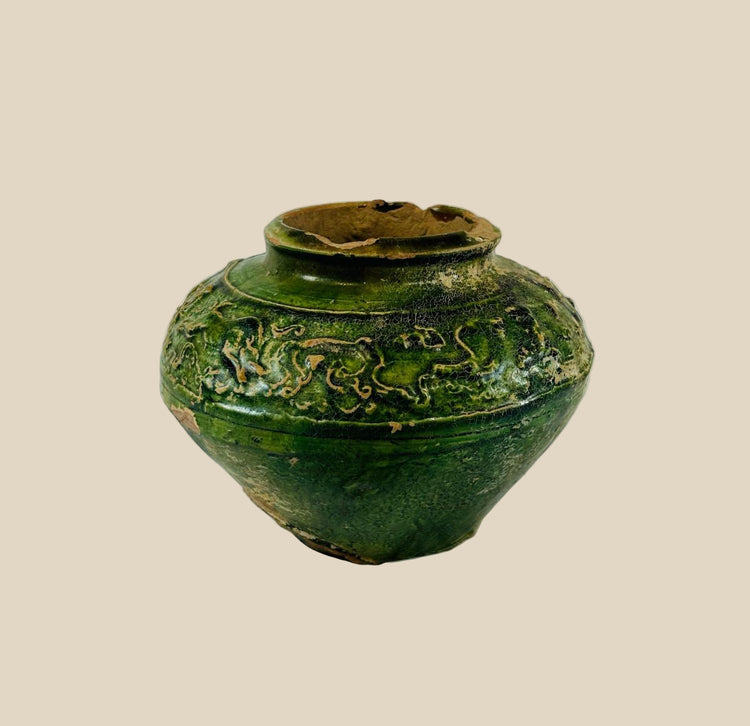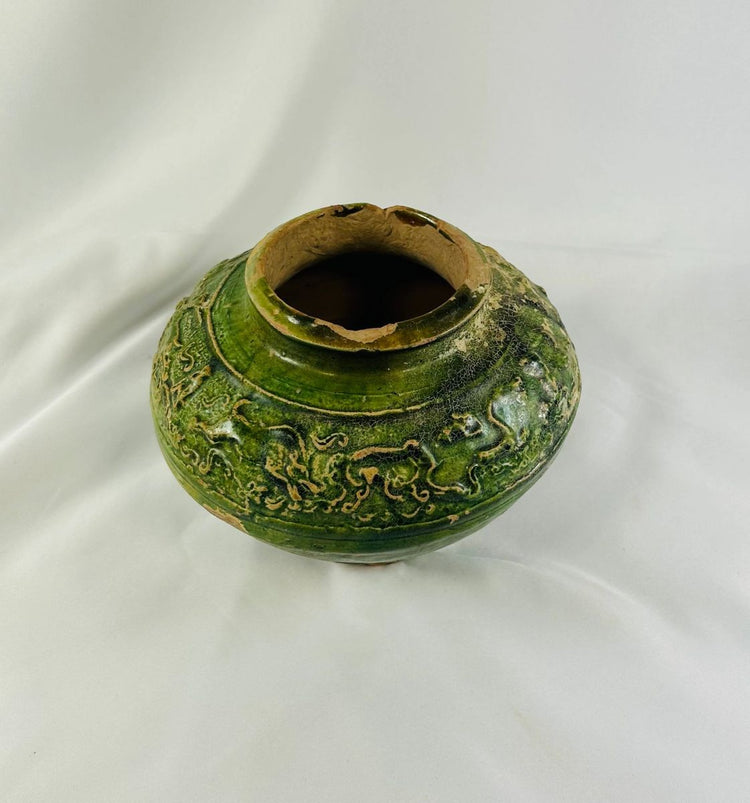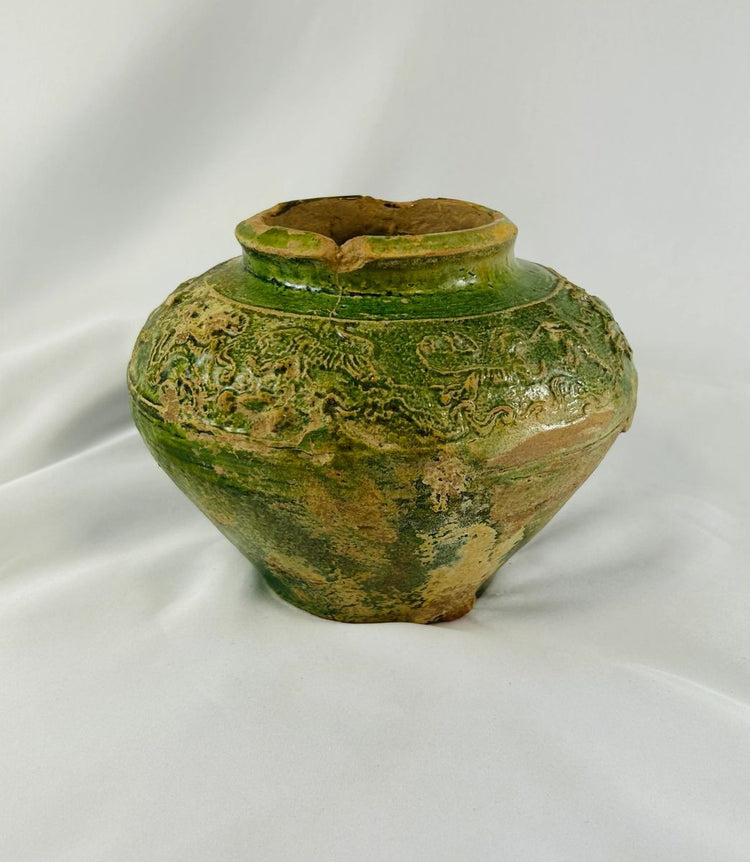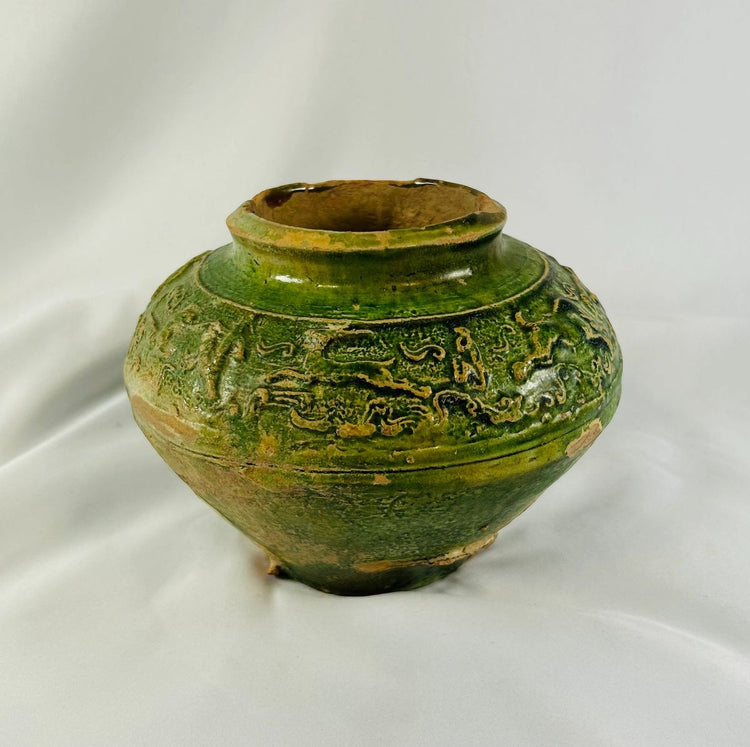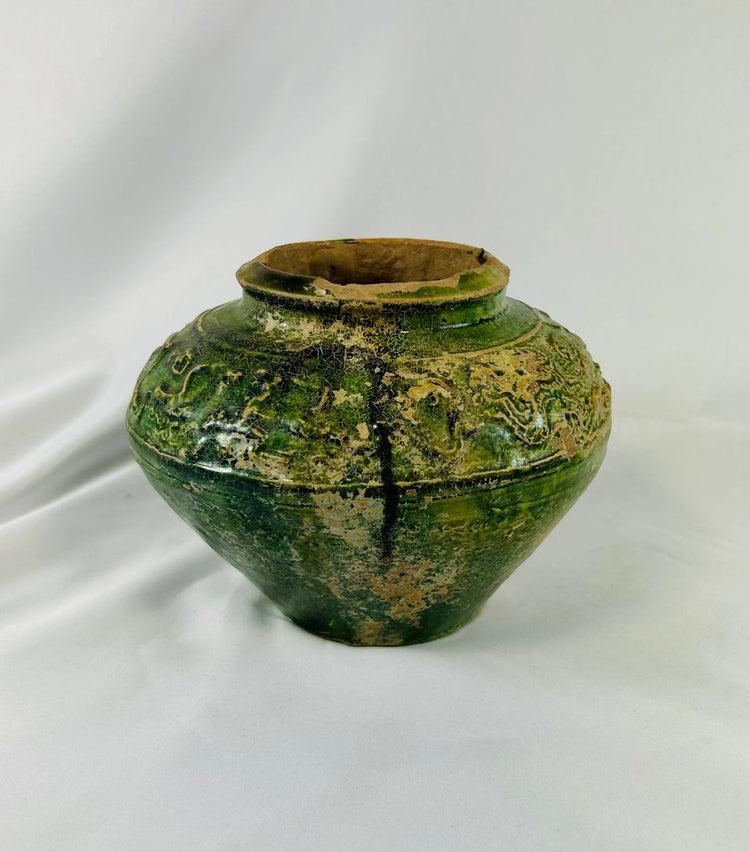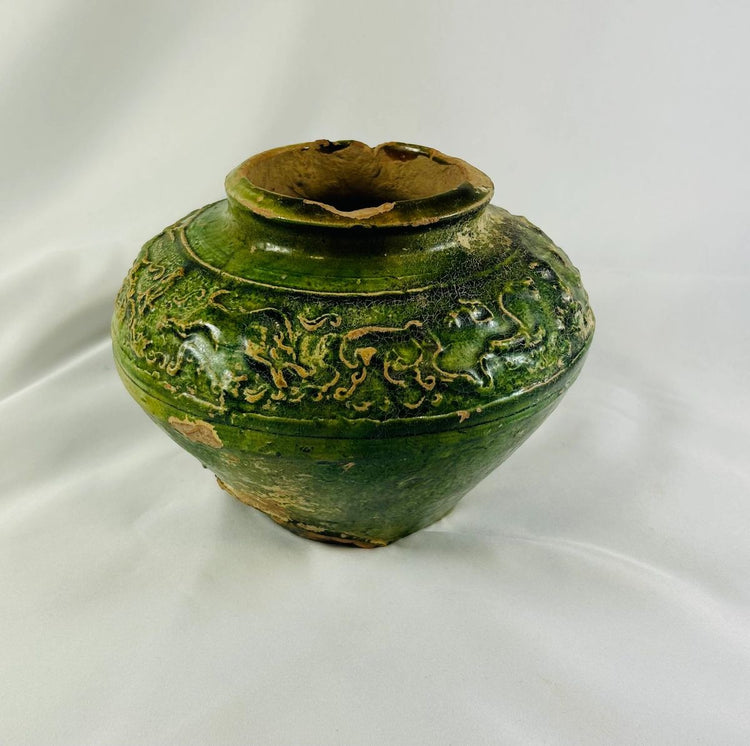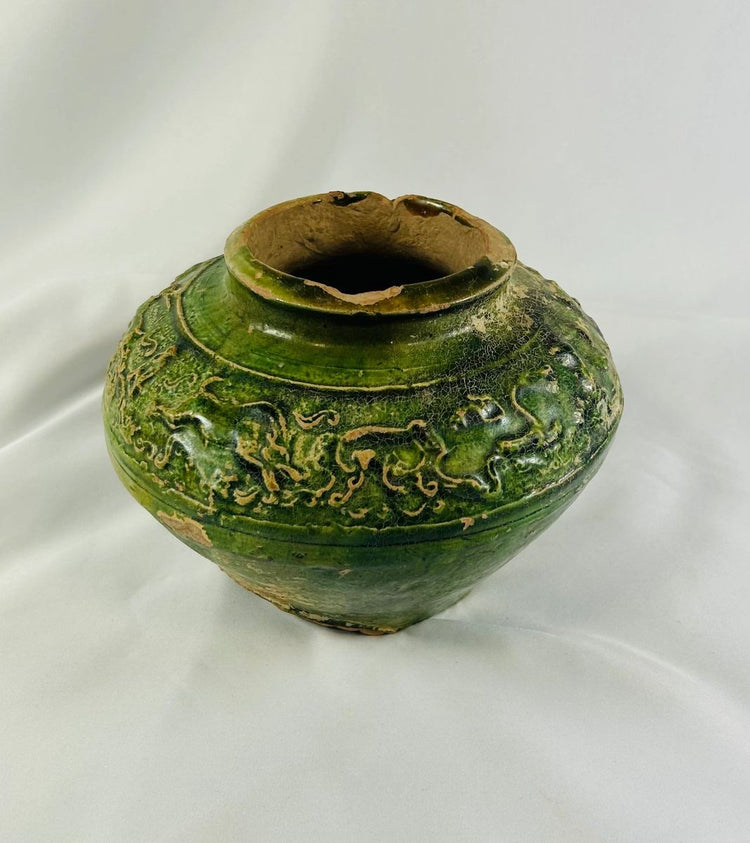Chinese Green Glazed Pottery Vessel | Circa 206 B.C. - 220 A.D.
Description
More
Less
Historical Context & Origin
Region: Ancient China (Han Dynasty)
Material: Green-glazed pottery (lead-based glaze)
Period: 202 BCE – 9 CE (Western Han) / 25–220 CE (Eastern Han)
Description
This remarkable green-glazed pottery vessel is a fine example of Han Dynasty ceramic craftsmanship, dating to the height of early imperial China. Measuring approximately 5 inches tall by 7 inches wide, it is adorned with molded relief designs of humans and animals, echoing the symbolic and artistic traditions of the period. Green-glazed ceramics of this type were created as funerary wares, placed in tombs to honor the deceased and provide them with protection and prosperity in the afterlife.
Features
- Compact vessel form with low-relief molded figures of humans and animals
- Rich green glaze, faded with age but still visible in areas
- Crafted with lead-based glaze technology developed during the Han Dynasty
- Designed to emulate costly bronze vessels, reflecting wealth and status
- Authentic burial ware preserved in excellent condition for its age
Cultural Significance
During the Han Dynasty, green-glazed ceramics were symbols of reverence and social standing. Often created as mingqi (tomb offerings), they accompanied the deceased into the afterlife, serving both functional and spiritual roles. The relief decoration of human and animal figures reflects the cosmological beliefs of the Han, honoring spirits, deities, and aspects of daily life. This vessel not only represents the technical innovation of early high-temperature firing but also embodies the cultural ideals of continuity, protection, and prosperity beyond death.
Condition
Well-preserved excavated condition with surface wear, minor glaze fading, and encrustations consistent with burial context. Relief details remain clear and intact.
Dimensions (approximate)
Height: 5 in
Width: 7 in
Age
Han Dynasty (202 BCE – 220 CE)
Learn More
Explore the rich history of the Han Dynasty
Discover More Ancient Chinese Artifacts in Our Collection
Description
Historical Context & Origin
Region: Ancient China (Han Dynasty)
Material: Green-glazed pottery (lead-based glaze)
Period: 202 BCE – 9 CE (Western Han) / 25–220 CE (Eastern Han)
Description
This remarkable green-glazed pottery vessel is a fine example of Han Dynasty ceramic craftsmanship, dating to the height of early imperial China. Measuring approximately 5 inches tall by 7 inches wide, it is adorned with molded relief designs of humans and animals, echoing the symbolic and artistic traditions of the period. Green-glazed ceramics of this type were created as funerary wares, placed in tombs to honor the deceased and provide them with protection and prosperity in the afterlife.
Features
- Compact vessel form with low-relief molded figures of humans and animals
- Rich green glaze, faded with age but still visible in areas
- Crafted with lead-based glaze technology developed during the Han Dynasty
- Designed to emulate costly bronze vessels, reflecting wealth and status
- Authentic burial ware preserved in excellent condition for its age
Cultural Significance
During the Han Dynasty, green-glazed ceramics were symbols of reverence and social standing. Often created as mingqi (tomb offerings), they accompanied the deceased into the afterlife, serving both functional and spiritual roles. The relief decoration of human and animal figures reflects the cosmological beliefs of the Han, honoring spirits, deities, and aspects of daily life. This vessel not only represents the technical innovation of early high-temperature firing but also embodies the cultural ideals of continuity, protection, and prosperity beyond death.
Condition
Well-preserved excavated condition with surface wear, minor glaze fading, and encrustations consistent with burial context. Relief details remain clear and intact.
Dimensions (approximate)
Height: 5 in
Width: 7 in
Age
Han Dynasty (202 BCE – 220 CE)
Learn More
Explore the rich history of the Han Dynasty
Discover More Ancient Chinese Artifacts in Our Collection
You May Also Like




















